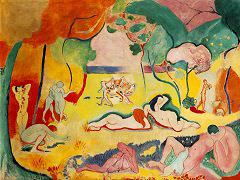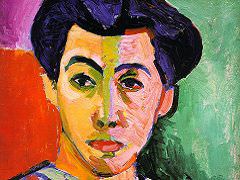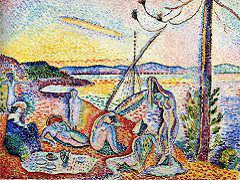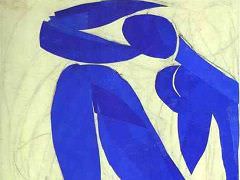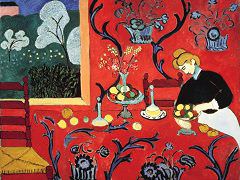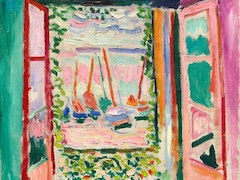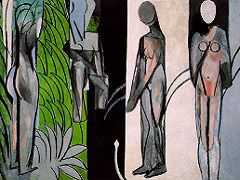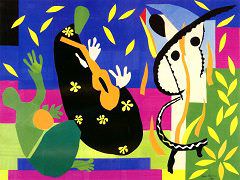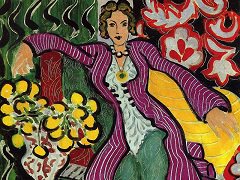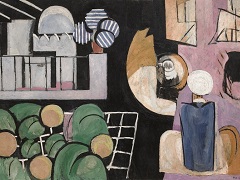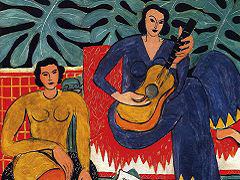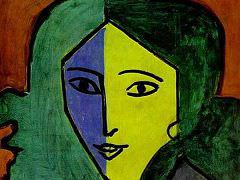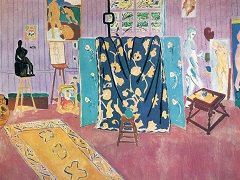The Painter's Family, 1911 by Henri Matisse
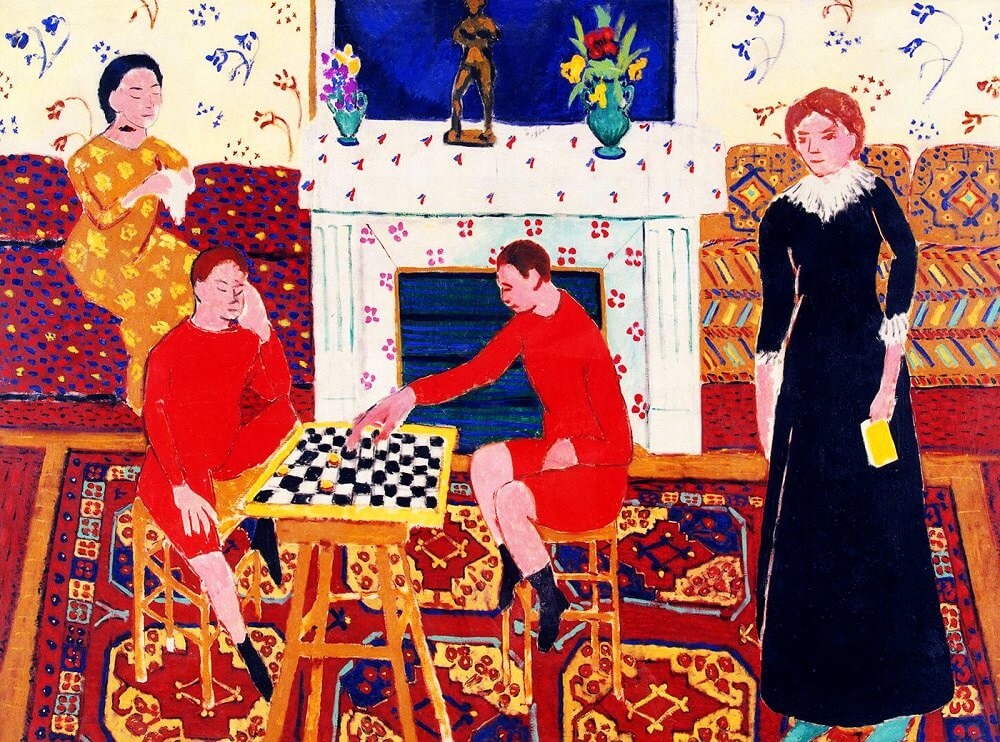
The Painter's Family is another of the four great "Symphonic Interiors" (to borrow Alfred Barr's apt phrase), perhaps the third of the series to be completed. It was painted in the artist's villa at Issy-les-Moulineaux, whereas L'Atelier Rouge and The Pink Studio were painted in his workrooms constructed in the garden and Still Life with Aubergines shows us the interior of his villa at Collioure. Hence, these four pictures sum up the artist's life and surroundings of that year, before he temporarily extended his working environment to North Africa.
This is the only one of the four pictures to introduce the figure. His wife is in the left distance, his sons Pierre and Jean are at the checkerboard, and his daughter, Marguerite, stands at the right. The overall flatness of design, relieved and contradicted by certain perspective details, corresponds to the technique of the other three. However, the quality of the color, predominantly red and red brown, lacks the ringing, sonic quality of the others. While not muted, the color is static, a feature helped by Marguerite's black dress. A single work of art, a small bronze figure, stands on the mantel over the central fireplace. Otherwise this is a domestic, bourgeois interior and, despite the picture's large size, remarkably Intimist in quality. Indeed, it suggests comparison with Vuillard's monumental decorative project for the library of Dr. Vaquez, Personnages dans des Interieurs, 1896, which was publicly exhibited for the first time at the 1905. Autumn Salon, the same which contained the "cage of wild beasts," and it is likely that Matisse saw it at that time. Matisse had met Vuillard much earlier, and had known of his work from about 1897, but curiously was little interested at the time in the efforts of the Nabis, of whom Vuillard was a member. In fact, Matisse's career through its first two decades was moving in a direction counter to that of Vuillard. It is just possible, however, that by 1911 Matisse was prepared to integrate Intimist themes, and even touches of their style, into his work. It is noteworthy that he later became a close friend of the other great Nabi master, Pierre Bonnard. Concerning the checkerboard theme, one should remember that it was employed by Cubist painters at this time, notably by Juan Gris, whose acquaintance Matisse was to make at Collioure in the summer of 1914. Further afield, it is interesting to speculate on the artist's choice of a game of checkers as the central, unifying theme of this domestic interior. Employing a different game played on the same board, namely chess, Marcel Duchamp had already treated the subject pictorially and by 1911 was exploring the metaphysical connotations of chess players in his King and Queen Surrounded by Swift Nudes. This stretched comparison only serves to underscore the materialistic and mythological, as opposed to the metaphysical, sources of Matisse's art. However idealized, spiritualized, and abstract his paintings became, his point of departure was always the real world of immediate sensations, a real world that became increasingly sumptuous as time passed.

